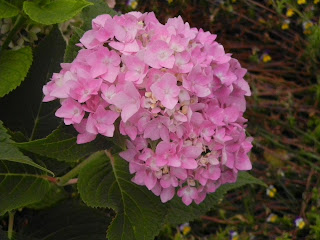The Great Strawberry Challenge
Two years ago we moved our strawberry patch. As we did so, we decided it was an ideal time to test different strawberry varieties and find the "best" one, or at least the best one for our area and our taste. I have come to refer to what followed as The Great Strawberry Challenge.
For the Challenge, I purchased four different varieties of strawberries, all of which were everbearing or day neutral. The original four varieties were purchased from three different nurseries and in the following forms:
Hecker--25 bare root plants
Tribute--25 bare root plants
Quinalt--25 bare root plants
Seascape--12 plants in 3" pots
I divided two of my raised beds in half and planted a different variety in each of the four halves.
Tip on planting strawberries:
When planting strawberries, soil should only come up to the crown of the plant (the point where the roots meet the above ground portion of the plant.) If planted too deeply, strawberries can develop crown rot. It is easier to tell how deep to plant strawberry plants that come in pots than plants that are bare root, because you simply have to place the plants so that the soil in the garden is level with the soil the plants come in.
All of the plants grew well except for the Quinalt, none of which came out of dormancy. The nursery I purchased these from did not have them refrigerated and they looked dry when I bought them.
Tip on buying bare root strawberries:
Only buy plants that have been refrigerated and that look moist or have some green growth on them.
I replaced the Quinalt strawberries with 18 Ozark Beauty plants which I purchased from a fourth nursery.
Then I just let the plants grow.
By late summer the plants began to produce berries, and the fun part of the Challenge began--picking and eating strawberries!
Production
The following pictures show the production for the different varieties over several pickings.

The Hecker and Tribute varieties consistently produced the most berries, but overall the Tribute berries were larger. Hecker tended to produce a lot of small berries.
The Ozark Beauty produced very few berries, although the plants were lush and filled in quickly. This surprised me because reports I had read on Ozark Beauty said that it is a heavy producer. Normally I would attribute this problem to too much nitrogen, which will result in lots of green growth but fewer berries. However, this variety was growing in the same soil as the others, and they did well.
When comparing the amount of berries produced, it is important to remember that I started out with only half as many Seascape plants as Tribute or Hecker. Seascape produced steadily, with about the same amount of berries at each picking. And the berries on Seascape tended to be large.

Taste
First let me say that all of the berries were delicious--they all tasted like fresh home grown strawberries. However, since this was a Challenge, we did want to determine if one variety had a better flavor than the others. To do this I performed a very unscientific blind taste test with six people. I had them each taste one of each variety of strawberry without telling them which was which.
Five of the six people chose Tribute as the best tasting with Seascape as their second choice. The sixth person chose Seascape as the best with Tribute as the second choice.
Hardiness
At the end of the first year I would have chosen Tribute, hands down, as the best variety. However the following spring the Tribute plants did not come back very well. The other three survived the winter much better and came back well.
Conclusion
Because of its better winter hardiness, we chose Seascape as our favorite strawberry variety. We liked its flavor, large berries, and consistent production.
However, if you are planting your patch in a sheltered area where it might be more protected in the winter, Tribute would be a good choice.








Comments
Post a Comment